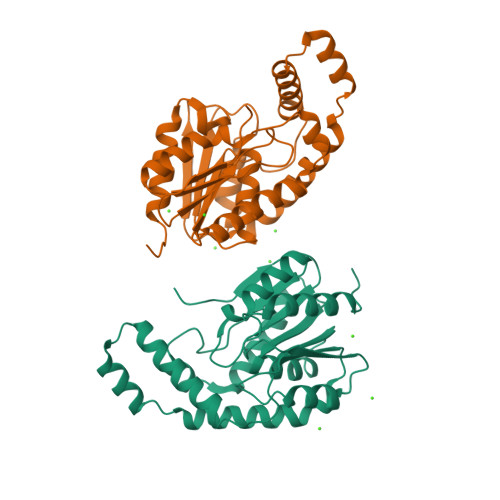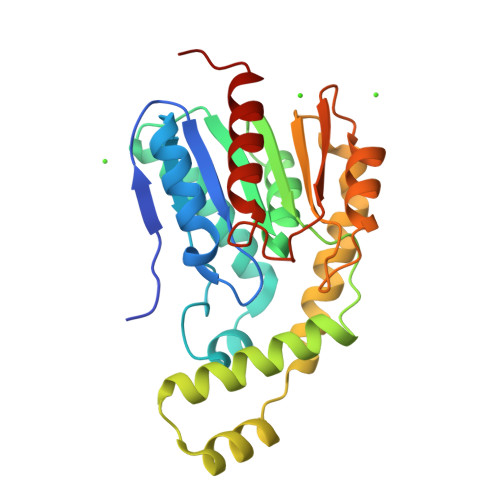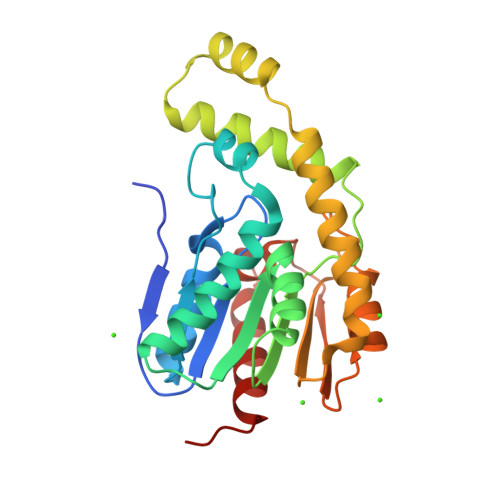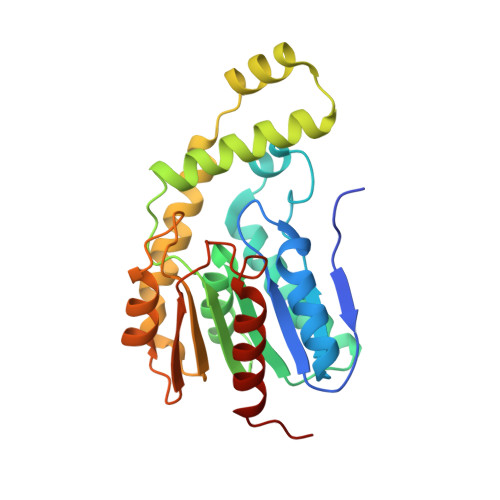Biochemical and Cellular Characterization of the Function of Fluorophosphonate-Binding Hydrolase H (FphH) in Staphylococcus aureus Support a Role in Bacterial Stress Response.
Fellner, M., Walsh, A., Dela Ahator, S., Aftab, N., Sutherland, B., Tan, E.W., Bakker, A.T., Martin, N.I., van der Stelt, M., Lentz, C.S.(2023) ACS Infect Dis 9: 2119-2132
- PubMed: 37824340
- DOI: https://doi.org/10.1021/acsinfecdis.3c00246
- Primary Citation of Related Structures:
8FTP - PubMed Abstract:
The development of new treatment options for bacterial infections requires access to new targets for antibiotics and antivirulence strategies. Chemoproteomic approaches are powerful tools for profiling and identifying novel druggable target candidates, but their functions often remain uncharacterized. Previously, we used activity-based protein profiling in the opportunistic pathogen Staphylococcus aureus to identify active serine hydrolases termed fluorophosphonate-binding hydrolases (Fph). Here, we provide the first characterization of S. aureus FphH, a conserved, putative carboxylesterase (referred to as yva K in Bacillus subtilis ) at the molecular and cellular level. First, phenotypic characterization of fph H-deficient transposon mutants revealed phenotypes during growth under nutrient deprivation, biofilm formation, and intracellular survival. Biochemical and structural investigations revealed that FphH acts as an esterase and lipase based on a fold well suited to act on a small to long hydrophobic unbranched lipid group within its substrate and can be inhibited by active site-targeting oxadiazoles. Prompted by a previous observation that fph H expression was upregulated in response to fusidic acid, we found that FphH can deacetylate this ribosome-targeting antibiotic, but the lack of FphH function did not infer major changes in antibiotic susceptibility. In conclusion, our results indicate a functional role of this hydrolase in S. aureus stress responses, and hypothetical functions connecting FphH with components of the ribosome rescue system that are conserved in the same gene cluster across Bacillales are discussed. Our atomic characterization of FphH will facilitate the development of specific FphH inhibitors and probes to elucidate its physiological role and validity as a drug target.
Organizational Affiliation:
Biochemistry Department, School of Biomedical Sciences, University of Otago, Dunedin 9054, New Zealand.




















